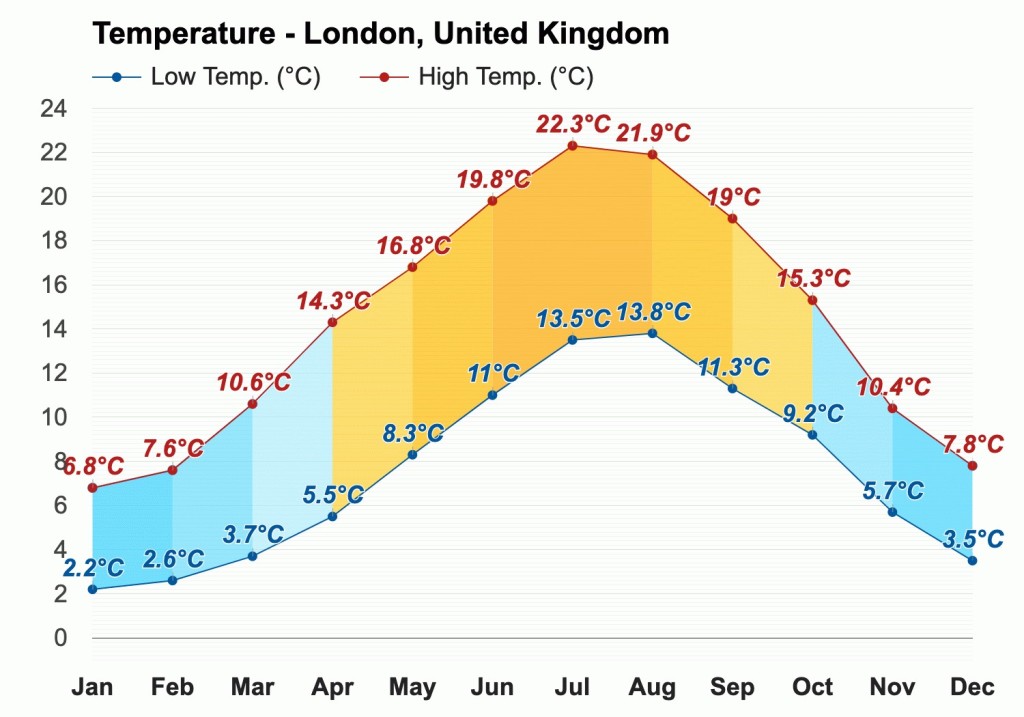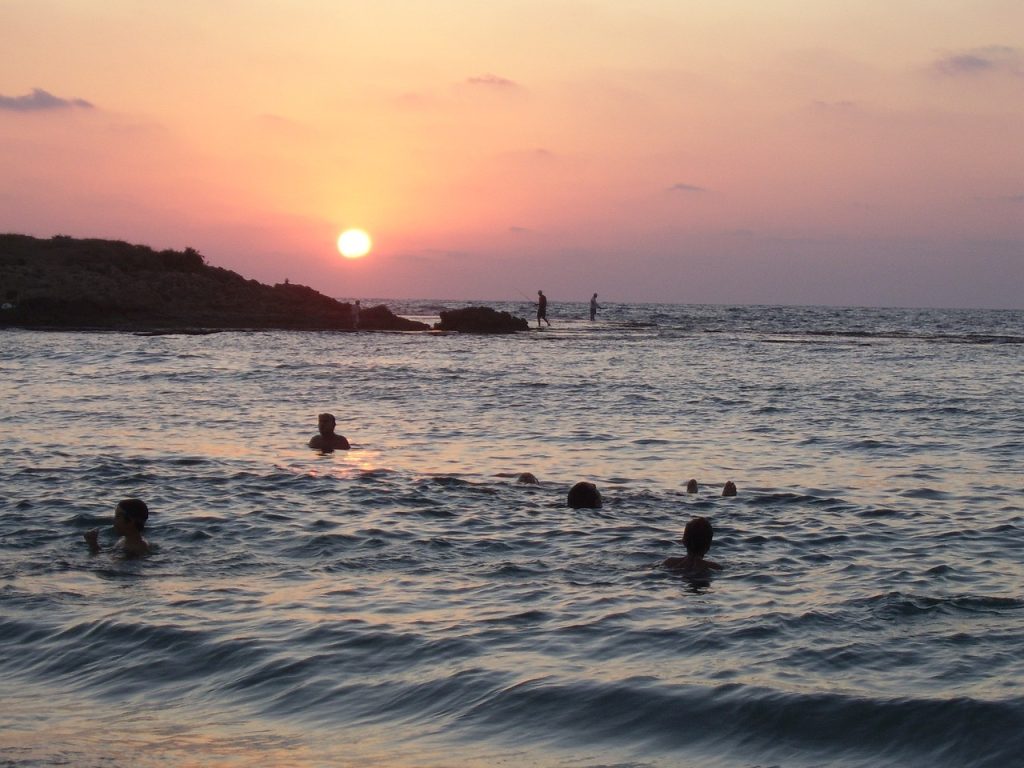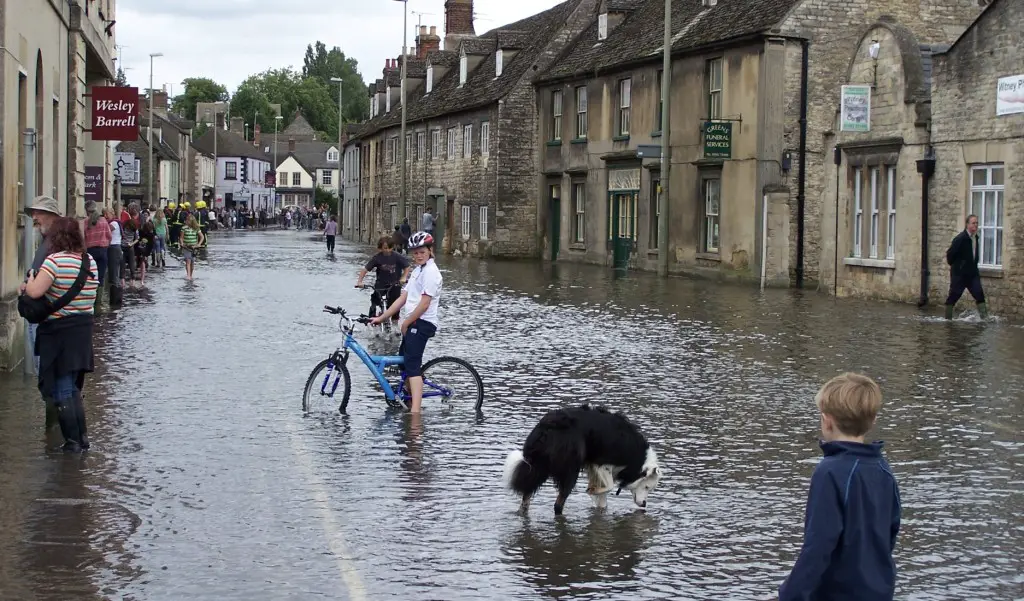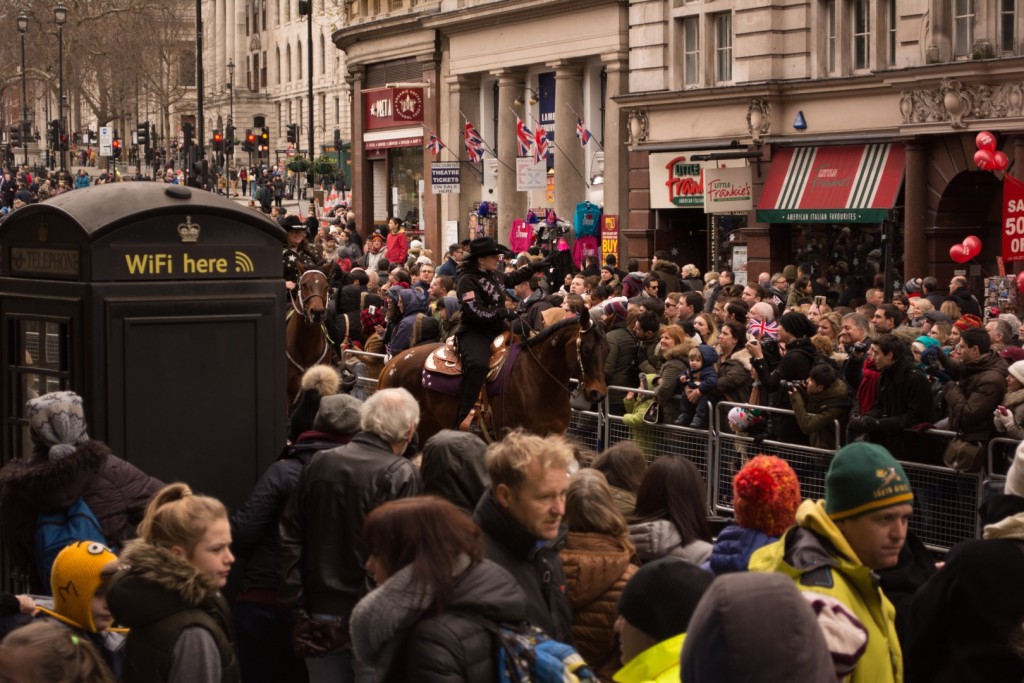
Located in the western region of mainland Europe, England is a nation renowned for its vibrant and bustling capital city, London, which happens to be its largest urban center as well. Despite England’s abundant array of attractions and lively urban destinations, there are specific periods that might not be optimal for a visit. Let’s embark on an exploration of the worst time to visit England!
The Worst Time to Visit England
It is not advisable to visit England during the winter months (mid-November to early March) due to unfavorable weather conditions. The region experiences cold, wet, and windy weather, with temperatures rarely going beyond 10°C (50°F). These conditions make outdoor activities challenging, and the limited daylight hours in December.

Moreover, the winter season brings long hours of darkness and frequent rainfall, which negatively impact outdoor sightseeing. Public transportation tends to be more crowded during this time, and roadways often face congestion due to holiday traffic, resulting in travel difficulties.
Furthermore, many tourist attractions have early closures or reduced operating hours during winter, limiting the chances to fully explore what England has to offer. It’s important to note that prices may also significantly increase during peak holiday periods like Christmas or New Year’s Eve.
Important: While winter can be cold and wet, it’s not necessarily the worst time to visit England. Some travelers enjoy the festive atmosphere, Christmas markets, and cozy indoor activities. However, outdoor activities may be limited, and attractions might have reduced hours or closures during this season.
Some Other Challenges for the Worst Time to Visit England
When you’re thinking about visiting England, it’s important to know about the following things that could be challenging or need careful thinking:
No Swimming Season!
Since many tourists are interested in visiting coastal areas, lakes, and beaches in England, they are often interested in swimming too. During the winter months in England, particularly from January to February, the water temperatures plummet to chilling levels, making it the worst time for visitors to indulge in swimming activities.

These months witness average water temperatures ranging between 2 and 7 degrees Celsius (36–45 degrees Fahrenheit), with occasional drops below freezing point.
Some smaller water reservoirs get so cold that they freeze and make swimming impossible as well. Even if the water isn’t frozen, it is not advisable to swim during winter, unlike many who do.
According to the National Water Safety Forum UK, swimming in such cold water poses significant dangers and can lead to detrimental experiences for visitors.
Suggested Reading: 10 Mesmerizing Beaches Near Birmingham UK
Snowstorms
Snowstorms are a common occurrence in England during winter mainly from December to February. The snowfall tends to be more significant in December and January, especially in regions that are not accustomed to heavy snow, such as the south of England. However, even in February, the northern parts of the country can still experience persistent snow.
- December: On average, England receives around 0.2 to 0.4 inches of snowfall during December. Snow accumulation can vary but can go up to 1 inch in some areas.
- January: January tends to have increased snowfall compared to December. On average, England experiences around 0.4 to 0.6 inches of snow during January. Snow accumulation can range from a few inches to around 2 inches in certain regions.
- February: Snowfall in February is similar to January. England typically sees around 0.4 to 0.6 inches of snow during February as well. Snow accumulation can vary from a few inches to around 2 inches, depending on the region and weather patterns.

Snowstorms are likely during these seasons. Remote areas like the Yorkshire Dales and Lake District often face severe and prolonged snowfall, which can potentially trap people indoors.
Conversely, heavy snow is rare in the south of England, including Kent and London. However, areas like Cornwall and Devon in the South-West may unexpectedly witness substantial snowfall even along the coast.
In March 2023, there was a notable occurrence of heavy snow and blizzards in northern England. A report by The Guardian highlighted the warning issued by The MeT Office due to strong winds and blizzard conditions, causing widespread disruptions in various areas. Southern England experienced flight cancellations, while rail and air travel in other regions faced potential delays and cancellations.
Furthermore, rural communities were significantly affected, experiencing power outages and disruptions in mobile phone coverage. These issues posed challenges for visitors who relied on electricity or mobile services for their various needs.
In particular, during emergencies or accidents, the lack of reliable communication and assistance made it difficult to seek help promptly. Therefore, it becomes one of the worst times to visit England, especially for tourists.
Flooding
Flooding is one of the challenges visitors may face when visiting England, particularly from November to February. The risk of flooding increases in southern England due to long periods of drought during the summer. As reported by the Met Office, Storm Franklin caused severe disruption across the country and this led to the first wave of flooding in February 2022.

In terms of specific areas that are more prone to flooding, northwest England, particularly the Lake District in Cumbria and the western-facing slopes of the Pennines have been affected. Southwest England, including elevated areas such as Dartmoor, Exmoor, and Bodmin Moor, also experience significant flooding.
Visitors can be affected by flooding in various ways. Popular tourist sites in flood-prone regions could be inaccessible or require alternative routes. Additionally, accommodation options may be limited due to damage caused by flooding.
This can lead to potential changes in travel plans. It is advisable to have a contingency plan and consider travel insurance that covers unexpected disruptions.
Heat Waves
Heat waves in England tend to occur during the warmest months of the year, namely July and August. These periods of exceptionally high temperatures can have significant impacts on visitors and the population in general.
In 2022, the severity of heat waves in England resulted in a distressing increase in excess deaths among people aged 65 and over. According to the UK Health Security Agency, more than 2,803 additional deaths were recorded during that summer compared to what would be expected. It is the highest death toll caused by heat in at least two decades.
In response to the severe heat, the Health Security Agency and the Met Office took action by issuing an amber Heat-health Alert for the entire UK. This alert acts as a crucial warning especially for visitors. It highlighted the potential risks associated with the soaring temperatures for people interested in outdoor activities.

If you’re planning to visit England during this period, be aware that all regions of England are under a yellow alert. This means that vulnerable groups are likely to be affected by the hot weather as announced by the UK Health Security Agency.
This situation raises concerns about the strain on healthcare services, as well as an increased health risk for individuals aged over 65 and those with pre-existing respiratory and cardiovascular conditions.
Coarse Fishing Closure
If you are planning a visit to England and have a passion for fishing, it is important to be aware of the close season for coarse fishing. The Environment Agency has issued a directive stating that the coarse fishing season undergoes an annual temporary closure period, which extends from March 15th to June 15th. The purpose behind this closure is to provide fish and their habitats with adequate time to recover and spawn effectively, contributing to the overall sustainability of fish populations.

- The Environment Agency strongly advises individuals to refrain from fishing during the close season.
- Violating the close season regulations can result in severe consequences, as stated in a press release issued by the UK Government.
- Offenders who violate these regulations run the risk of facing a court appearance and a substantial fine.
- The maximum fine that can be imposed for violating the close season regulations is up to £50,000, which is approximately $63,323.
The enforcement of such penalties underscores the importance of adhering to fishing regulations and conservation efforts during this period. To ensure a positive and responsible fishing experience in England, visitors should plan to avoid the close season for coarse fishing. Always check the official website for the latest updates too.
When is England Expensive and Crowded?
The summer months of April to August are the busiest and most expensive time to visit England. Tourists flock to the country during this period due to various events and festivals. Notting Hill Carnival, Sidmouth Folk Festival, Boomtown, Glastonbury Festival, Lost Village, Shambhala, and Neverworld are some of the popular festivals that attract a large number of visitors in the summer.

As a result of the high demand, hotel rates skyrocket. Flights and transportation expenses also increase during this peak season. Dining out and entertainment can quickly add up as many restaurants offer special promotions around summertime.
Additionally, roads are congested, leading to frequent traffic jams, which can be frustrating if you plan to rent a car for a road trip. Planning ahead and making reservations in advance can help alleviate some of the challenges faced by visitors during this time.
Recommended Reading: 5 Stunning Bays In Wales You Never Knew Existed
Month-by-Month Analysis: Planning a Trip to England
If you are confused about when to visit England, use the following monthly analysis to figure out.
January
- Temperatures: Average temperature ranges from 2°C to 8°C (36°F to 46°F).
- Weather: Generally cold with occasional rain and snow showers.
- Activities: Indoor activities are popular during this month, such as visiting museums, art galleries, and historic sites.
- Special Events: New Year’s Day celebrations take place on January 1st, including fireworks displays in major cities.
- Crowd Level: Relatively low, except during New Year’s celebrations.
February
- Temperatures: Average temperature ranges from 2°C to 8°C (36°F to 46°F).
- Weather: Similar to January, cold with occasional rain and snow showers.
- Activities: Indoor activities continue to be popular, including exploring indoor markets, attending theater performances, or enjoying traditional English afternoon tea.
- Special Events: Valentine’s Day on February 14th is celebrated with various romantic events and special menus at restaurants.
- Crowd Level: Relatively low, except during Valentine’s Day celebrations.
March
- Temperatures: Average temperature ranges from 4°C to 11°C (39°F to 52°F).
- Weather: Transitioning into spring, with milder temperatures and increasing sunshine. Occasional rain showers are still possible.
- Activities: Exploring gardens and parks becomes more enjoyable during this time, as flowers start to bloom. Visiting iconic landmarks, such as Stonehenge or the Tower of London, is also popular.
- Special Events: St. Patrick’s Day is celebrated on March 17th with parades and festivities, especially in cities like London and Birmingham.
- Crowd Level: Moderate, as some tourists take advantage of the milder weather.
April
- Temperatures: Average temperature ranges from 6°C to 14°C (43°F to 57°F).
- Weather: Spring weather with increasing warmth, occasional rain showers, and longer daylight hours.
- Activities: Exploring the countryside, hiking, and visiting national parks are popular. Cherry blossoms in parks like Kew Gardens are a beautiful sight.
- Special Events: Easter is celebrated, usually in late March or early April, with various events, including egg hunts and church services.
- Crowd Level: Moderate to high, especially around the Easter holidays.
May
- Temperatures: Average temperature ranges from 9°C to 17°C (48°F to 63°F).
- Weather: Spring is in full swing, with mild temperatures, occasional rain showers, and longer daylight hours.
- Activities: May is a great time to explore the countryside, go hiking, or visit coastal areas. Outdoor markets and festivals start to open.
- Special Events: The Chelsea Flower Show, one of the world’s most prestigious flower shows, takes place in London in late May.
- Crowd Level: Moderate, as tourists begin to arrive for the warmer weather.
June
- Temperatures: Average temperature ranges from 12°C to 20°C (54°F to 68°F).
- Weather: Warmer temperatures and longer days, with occasional rain showers.
- Activities: Exploring seaside towns, visiting castles and gardens, and enjoying outdoor activities like boating or picnics in parks.
- Special Events: Trooping the Colour, the official celebration of Queen Elizabeth II’s birthday, is held in London in early June.
- Crowd Level: High, especially in popular tourist destinations and during special events.
July
- Temperatures: Average temperature ranges from 14°C to 23°C (57°F to 73°F).
- Weather: Generally warm and pleasant with occasional rain showers.
- Activities: Enjoying the vibrant atmosphere of cities, exploring coastal areas, and attending outdoor music festivals or theater performances.
- Special Events: Wimbledon, the prestigious tennis tournament, takes place in London during early July.
- Crowd Level: High, especially in major cities and during popular events.
August
- Temperatures: Average temperature ranges from 14°C to 23°C (57°F to 73°F).
- Weather: Similar to July, warm and pleasant with occasional rain showers.
- Activities: Exploring historic sites, visiting amusement parks, and enjoying outdoor activities like hiking or cycling.
- Special Events: Notting Hill Carnival, one of Europe’s largest street festivals, takes place in London over the August Bank Holiday weekend.
- Crowd Level: High, especially in major cities and during the summer holidays.
September
- Temperatures: Average temperature ranges from 11°C to 19°C (52°F to 66°F).
- Weather: Transitioning into autumn, with mild temperatures, occasional rain showers, and shorter daylight hours.
- Activities: Exploring countryside landscapes, visiting vineyards, attending harvest festivals, and enjoying scenic walks.
- Special Events: The Last Night of the Proms, a traditional music event, takes place at the Royal Albert Hall in London.
- Crowd Level: Moderate, as the summer tourist rush begins to subside.
October
- Temperatures: Average temperature ranges from 8°C to 14°C (46°F to 57°F).
- Weather: Autumn weather with cooler temperatures, occasional rain showers, and beautiful autumn foliage.
- Activities: Exploring historic cities, visiting haunted sites, attending Halloween-themed events, and enjoying cozy pubs with traditional food.
- Special Events: Halloween celebrations take place throughout the country, with spooky events, costume parties, and ghost tours.
- Crowd Level: Moderate, except during Halloween celebrations.
November
- Temperatures: Average temperature ranges from 5°C to 10°C (41°F to 50°F).
- Weather: Cool temperatures, occasional rain showers, and shorter daylight hours.
- Activities: Visiting Christmas markets, exploring museums and art galleries, and enjoying traditional British cuisine.
- Special Events: Bonfire Night or Guy Fawkes Night is celebrated on November 5th with firework displays and bonfires in many towns and cities.
- Crowd Level: Relatively low, except during Bonfire Night celebrations.
December
- Temperatures: Average temperature ranges from 3°C to 8°C (37°F to 46°F).
- Weather: Cold temperatures, occasional snow showers, and festive atmosphere.
- Activities: Christmas shopping, visiting winter markets, ice skating, and enjoying Christmas-themed events and decorations.
- Special Events: Christmas festivities take place throughout the country, with markets, carol concerts, and festive lights.
- Crowd Level: Moderate to high, especially in major cities and during the Christmas period.
Conclusion
While England may be one of the top places on your bucket list, it is always wise to avoid the worst times to visit England. This way, you will be able to avoid a whole lot of problems that many other visitors face. You will also be able to have a fun-filled vacation with minimal disturbances throughout the trip, making it one of the best ones you’ve ever had!
Worst Time to Visit England - FAQs
The summer months of June, July, and August tend to be the busiest in England, especially in popular tourist destinations and major cities. If you prefer to avoid large crowds, you may consider visiting during shoulder seasons like spring (April-May) or autumn (September-October).
The winter months of December, January, and February are generally considered the worst time to visit England weather-wise due to cold temperatures, shorter daylight hours, and a higher chance of rain and snow showers.
During the Christmas and New Year period, particularly around December 24th to January 1st, there may be disruptions to travel and transportation services due to public holidays and reduced schedules. It’s recommended to plan your travel arrangements accordingly and check for any service changes or disruptions.





